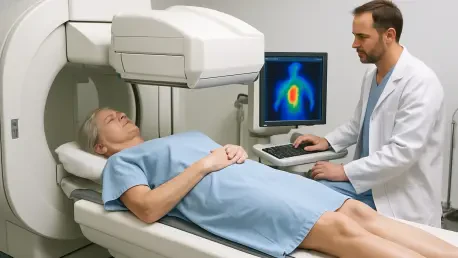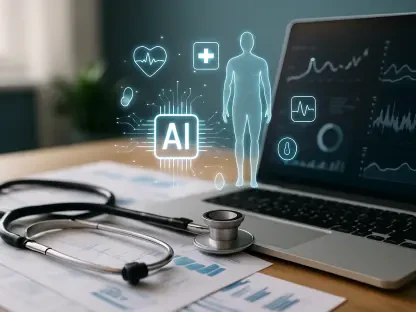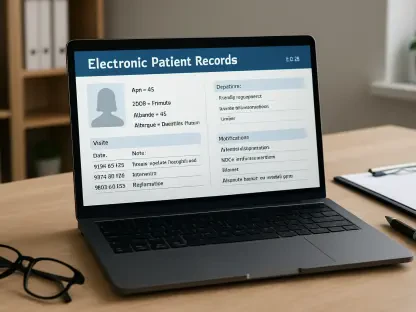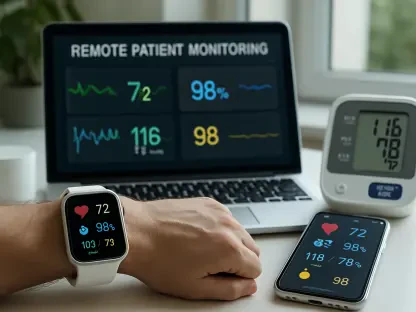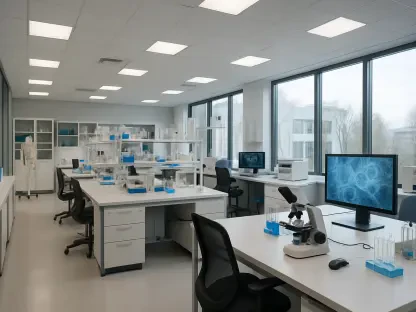In recent years, the field of medical diagnostics has witnessed a rapid transformation, largely driven by advancements in nuclear medicine software. As healthcare providers continue to seek more precise and effective diagnostic tools, nuclear medicine software stands at the forefront, offering remarkable capabilities that enhance imaging and data analysis. The global nuclear medicine software market is poised for substantial growth, driven by the increasing demand for early and accurate diagnoses, which are crucial in managing chronic diseases such as cancer, cardiovascular disorders, and neurological conditions. With a projected market value of USD 1,491.55 million by 2030, the sector is witnessing a compound annual growth rate of 9.0% from 2025 to 2030. This underscores the pivotal role nuclear medicine software plays in shaping the future of diagnostics.
Advances in Imaging and Data Analysis
Central to the transformation of diagnostics is nuclear medicine software’s ability to revolutionize imaging and data analysis processes. Modern nuclear medicine software facilitates detailed imaging and comprehensive patient data analysis, allowing healthcare professionals to tailor treatment plans based on individual patient needs. By integrating automated dosimetry and workflow coordination, these software solutions enhance safety and precision in treatment planning. This progress enables clinicians to deliver precise diagnoses and optimize treatment strategies, ultimately improving patient outcomes.
One notable advancement is the integration of artificial intelligence into nuclear medicine software, boosting image analysis and interpretation capabilities. AI algorithms enable more thorough examinations of conditions at a molecular level, providing insights that were once unattainable. The sophistication of AI-driven tools allows healthcare providers to uncover nuances in imaging data, supporting early detection and management of diseases.
Regulatory Environment and Safety
The nuclear medicine software market is fundamentally influenced by its regulatory framework, which is becoming increasingly stringent to prioritize patient safety and ensure effective implementation. Regulatory bodies such as the FDA, EMA, IAEA, Health Canada, and Australia’s TGA are spearheading efforts to create transparent guidelines, aiding in the adoption and validation of nuclear medicine software. These efforts facilitate the safe integration of AI and advanced data-driven tools into clinical settings.
The evolving legal landscape addresses both risk mitigation and secure practices. By emphasizing patient safety, it fosters a conducive environment for utilizing nuclear medicine software. Standardized practices and regulations contribute significantly to enhancing healthcare quality, encouraging more institutions to adopt these advanced solutions. However, navigating this intricate regulatory landscape remains a challenge, as vendors must meet diverse compliance requirements across different international markets.
Challenges and Barriers
Despite its promising trajectory, implementing nuclear medicine software is not without challenges. High costs associated with imaging equipment, data privacy concerns, and integration difficulties can hinder growth. The scarcity of skilled professionals and the need for scalable, user-centric solutions highlight an urgent requirement for investments in workforce training and development. Addressing these barriers is essential to fully realize the software’s potential and expand its adoption across healthcare systems.
Efforts to overcome these obstacles will necessitate an emphasis on building efficient solutions that prioritize interoperability and ease of use. This will require collaboration between stakeholders, including vendors, healthcare providers, and regulatory bodies. By fostering an ecosystem that supports seamless integration and deployment, the industry can ensure broader access to and utilization of nuclear medicine software’s capabilities.
Regional Growth Opportunities
The global nuclear medicine software market is witnessing varied growth patterns across different regions. In particular, the Asia Pacific region is identified as having significant growth potential due to increasing nuclear medicine facilities and favorable regulatory changes. Cross-border collaborations and rising investments from the private sector contribute to the region’s continued expansion.
Healthcare systems in Asia Pacific are focusing on enhancing imaging capabilities, including the expansion of PET/CT and SPECT/CT facilities. This infrastructure improvement is paired with a growing demand for advanced software solutions, optimizing imaging workflows and boosting diagnostic efficiency. Additionally, the region’s adherence to evolving safety standards and regulations reinforces the need for nuclear medicine software, driving its adoption.
Conclusion: The Path Forward
The nuclear medicine software market has significantly influenced the evolution of diagnostics, enabling enhanced patient care through improved imaging and data analysis capabilities. Continued advancements in AI, cloud-based platforms, and treatment planning solutions are poised to redefine diagnostics, particularly in the diagnosis and treatment of complex diseases like cancer. Future considerations focus on overcoming current challenges by increasing software adoption, enhancing interoperability, and developing solutions that cater to diverse end users.
As the market evolves, the emphasis will be on addressing fragmented regulatory landscapes, data privacy, and the high costs associated with sophisticated systems. Overcoming these hurdles will play a crucial role in achieving the sector’s full potential and ensuring its transformative impact on healthcare. The industry will continue to evolve, with North America maintaining its leadership position, while the Asia Pacific region anticipates substantial growth due to ongoing investments in medical infrastructure and rising demand for innovative technologies. Ultimately, nuclear medicine software is set to significantly transform diagnostics, offering unprecedented precision and efficiency in patient care.
